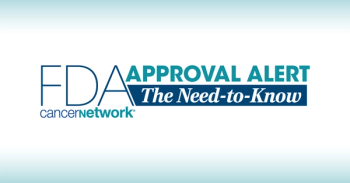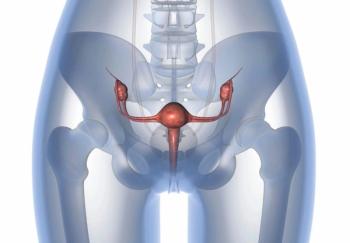
Scorpion Venom Approach May Prove “Powerful” in Glioblastoma Research
Data from a phase 1 trial demonstrate the safety and feasibility of administering chlorotoxin-based cellular therapy to those with recurrent glioblastoma.
When considering how chlorotoxin, a peptide found in scorpion venom, can play a role in glioblastoma management, Michael Barish, PhD, emphasized how one should not “underestimate the power of evolution.”
“Scorpion venom has been around for a very long time, and somehow, through the process of natural selection, this component of the venom became useful to the scorpion,” he stated. “That strategy of looking towards things that are evolutionarily optimized for their own purpose—there’s a lot that can be looked at there.”
Barish, a chair in the Department of Neurosciences/Developmental & Stem Cell Biology at City of Hope, spoke with CancerNetwork® about the implications of early findings from a phase 1 trial (NCT04214392) assessing the safety and feasibility of administering chlorotoxin-directed CAR T-cell therapy (CLTX-CAR T cell therapy) in a small cohort of patients with recurrent glioblastoma. He highlighted how discussions with colleagues like Christine Brown, PhD, deputy director of the T Cell Therapeutics Research Laboratory and professor in the Departments of Hematology & Hematopoietic Cell Transplantation and Immuno-Oncology at City of Hope, inspired this initiative.
Among 4 patients who received treatment, the investigational agent appeared to be well-tolerated with no dose-limiting toxicities, and a best response of stable disease occurred in 3 (75%). Although responses were not as strong as Barish hoped for, he stated that the cellular therapy demonstrated the activity that his team wanted to see, supporting continued development and reconfigurations of the chlorotoxin-based agent.
“Natural selection has made these kinds of toxins [quite] specific, and there [may be] others that can be used this way. The fact that we could do this kind of first-in-human approach to using a natural product in this way is potentially very powerful and very valuable,” Barish concluded.
CancerNetwork: What was the rationale for assessing chlorotoxin-directed CAR T-cell therapy for patients with recurrent glioblastoma?
Barish: Glioblastoma is essentially incurable, unlike many other cancers. Part of the problem is that it’s extremely heterogeneous, both within tumors and between patients, so there’s no single target that is useful rather than, say, CD19 for blood cancers, which is pretty much a universal B-cell marker. The thing about chlorotoxin is that neurobiologists have known for a long time that this toxin will bind to most, if not all, glioblastoma cells. It is a component of scorpion venom. The scorpion venom has more than 100 components, and this is one of them. At one point, people were screening these venoms to look for specific ion channel activity, and chlorotoxin came out of that kind of screening.
The toxin itself is not toxic to people. It acts more like a chaperone for the scorpion [venom] in carrying deadly toxins into the nervous system of the brain. It’s been known that it’s not toxic in humans, but it’s been given for other reasons. The idea was that [because] we could use it as the targeting element on a chimeric antigen receptor that we would express in a T cell, it would therefore bind to glioblastoma cells in more patients than any other targeting entity.
This [research] was done in collaboration with Christine Brown, PhD, who’s an immunotherapy [faculty member] at City of Hope; I am a neurobiologist by training. We have talked quite a bit, Christine and I, about glioblastoma, and I had this idea that maybe we could use the toxin this way. It started [with the thought of], “Let’s try and see what happens.” We were quite prepared for it to be one of those bright ideas that does not pan out...but the fact that it went to a clinical trial was quite surprising to us. Of course, we were pleased, but it was unexpected. I think it’s important to emphasize that Christine is half of the story.
Mechanistically, what advantages might this CAR T-cell therapy offer compared with other cellular therapies in glioblastoma or other patient populations?
Mechanistically, the advantage is that [the CAR T-cell therapy] will bind, as far as we can tell, to more glioblastoma cells within a tumor—because the tumors themselves are heterogeneous—and to the tumors of more patients than any other recognition element we can think of that we could put on an engineered T cell. That’s why it’s important. It does not bind with great affinity, but it binds with good avidity, meaning that it’s extremely specific for the glioblastoma cells as compared to any other cells in the body. That mechanism is very important because we did not want on-target, off-tumor effects, which would be quite bad. That characteristic made it very useful for us.
What did findings from your phase 1 trial show regarding the safety and feasibility of administering CLTX-CAR T-cell therapy to patients? What potential clinical activity has it shown thus far?
We knew from other work that chlorotoxin is safe [when] being given to humans. It [would] never be used in this way, but people have used it to try and target glioblastoma cells, simply as the toxin. There are groups that are using it to fluorescently tag it and use it to make something called “tumor paint”, where the idea is that surgeons could then look for the glioblastoma cells when they were doing surgery. We knew going in that we thought it would be safe, but you never know until you do it, obviously.
We were very pleased that, in fact, we had essentially no deleterious reactions in the patients whom we gave it to. It seemed to do what it was supposed to do; maybe not as strong as we wanted, but there was a reaction in the tumors of the patients. In some advantageous cases, you could see signs of biological activity within the MRIs. You could see cytokine production, indicating that the CAR T cell was active in the tumor; that was the most important thing. There were no bad reactions to it. It was well-tolerated in a small number of patients.
We saw the activity we wanted to see, which is that the patients responded when it was injected into the tumor cavity after resection. That told us we had biological activity, and that it seemed to be safe and well-tolerated. The response was not as strong as we might have liked, but that’s not the point of a phase 1 trial. A phase 1 trial is to show safety and feasibility, and we did see that.
What are the next steps for researching the efficacy and safety of CLTX-CAR T-cell therapy in glioblastoma or other patient populations?
We established the safety for the strength of the CAR T cell that we made. It was not strong enough to cure the disease, which we would love to do. Right now, we are working on engineering different versions of the chlorotoxin itself and modifying the T cells that express this chimeric receptor because there are many different ways you can engineer a T-cell receptor to do that…. [Originally], we just used the native sequence of the toxin. Now, we are trying to engineer it to have more power and greater efficacy, both in vitro studies and then in small animal studies.
What’s unusual about [chlorotoxin] is that it is a component of a venom. It is a toxin that we used, and that is the first time that’s been done in this context. It’s proof of principle in a way, that venoms of many invertebrates are, in fact, very powerful biologically. In a sense, evolution has honed them to be relatively specific. Neurobiology is very much driven by the specificity of different toxins for different ion channels. That was the original idea behind the research that identified chlorotoxin in the first place. This idea—that one could use biological products efficiently this way for something as heterogeneous as glioblastoma—might be an example of how it could be more efficacious for other solid tumors as well.
Reference
Barish ME, Aftabizadeh M, Hibbard J, et al. Chlorotoxin-directed CAR T cell therapy for recurrent glioblastoma: interim clinical experience demonstrating feasibility and safety. Cell Rep Med. 2025;6(8):102302. doi:10.1016/j.xcrm.2025.102302.
Newsletter
Stay up to date on recent advances in the multidisciplinary approach to cancer.






















































































